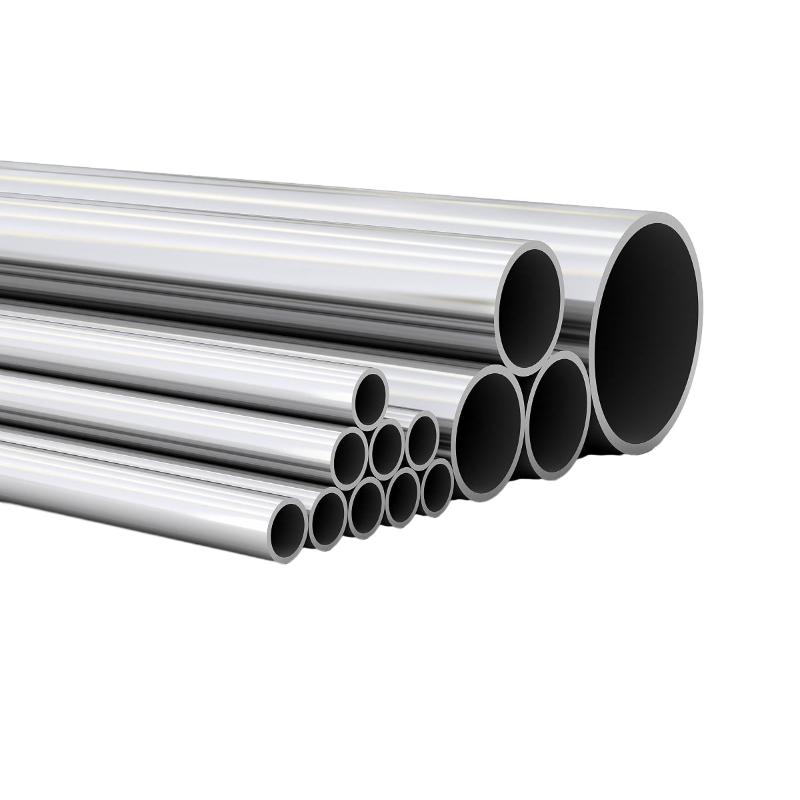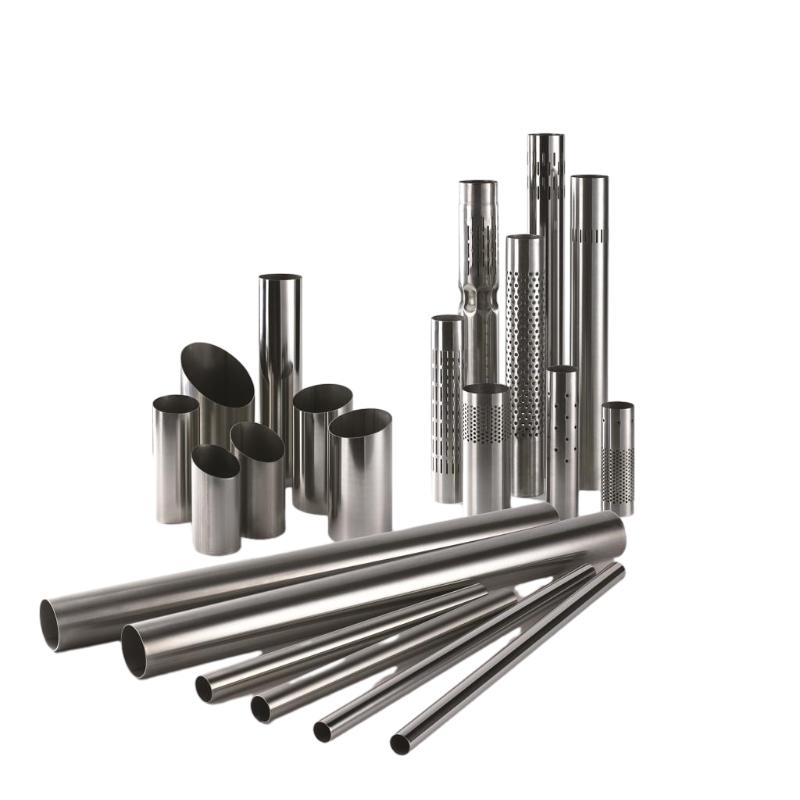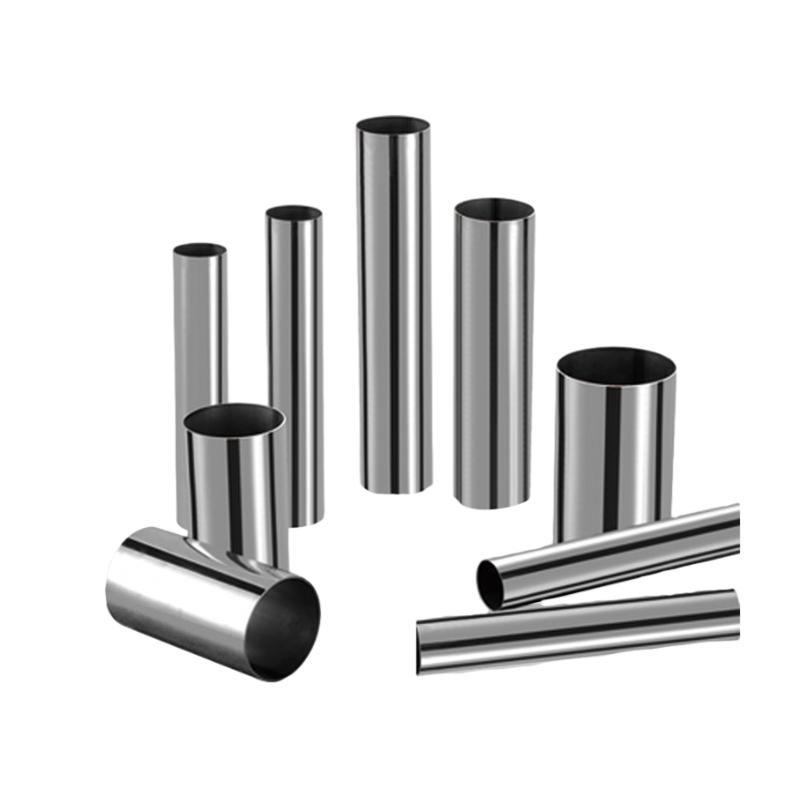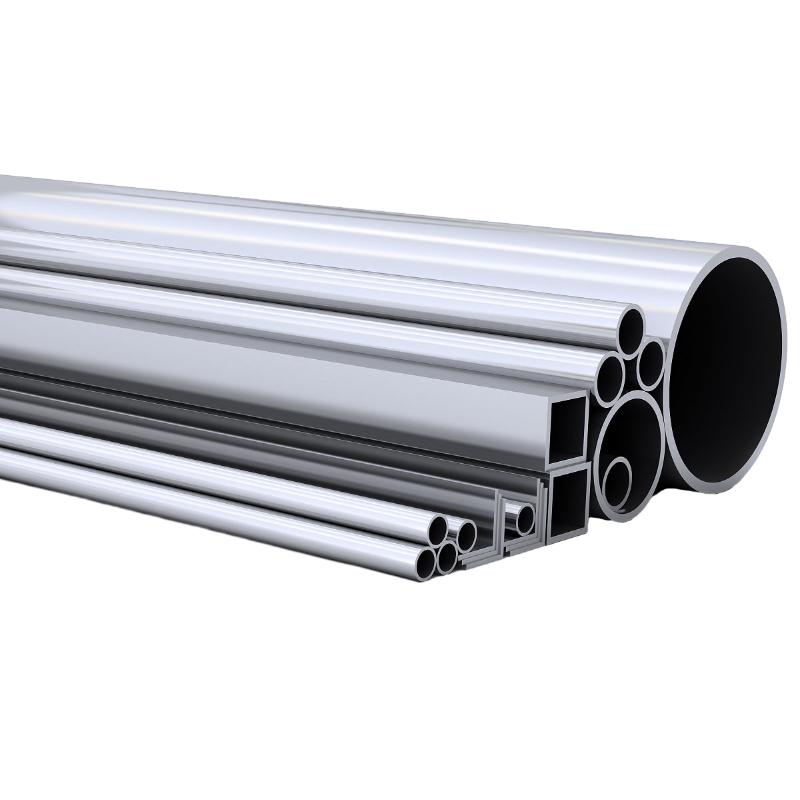In critical industrial applications where precision, hygiene, and durability are paramount, the choice of materials for infrastructure components directly impacts operational efficiency and safety. Among these, the Infusion Rack Stainless Steel Tube stands out as a fundamental component, particularly in sectors demanding stringent material integrity. These tubes are engineered to meet exacting standards, ensuring reliable performance in diverse environments ranging from petrochemical processing to advanced medical facilities.
Stainless steel tubing, especially grades like 304 and 316L, offers an unparalleled combination of corrosion resistance, mechanical strength, and inertness, making it indispensable for conveying sensitive fluids and supporting critical equipment. The advanced manufacturing processes and rigorous quality controls applied to the production of Infusion Rack Stainless Steel Tube ensure their suitability for high-stakes applications where failure is not an option. This article delves into the technical intricacies, application benefits, and market dynamics surrounding this vital industrial product.
Manufacturing Process: Ensuring Precision and Performance
The production of high-quality Infusion Rack Stainless Steel Tube is a sophisticated process involving multiple stages, each meticulously controlled to ensure the final product meets stringent industry specifications. The emphasis on material purity, dimensional accuracy, and surface finish is critical for applications demanding high performance and longevity.
Detailed Process Flow:
- Raw Material Inspection: Begins with selecting high-grade stainless steel billets, typically AISI 304 or 316L, known for their excellent corrosion resistance and mechanical properties. Each batch undergoes rigorous chemical composition analysis and mechanical property testing (tensile strength, yield strength, elongation) to ensure conformity with international standards like ASTM A269 or A270.
- Melting and Casting: Stainless steel is melted in electric arc furnaces (EAF) or induction furnaces, followed by argon oxygen decarburization (AOD) or vacuum oxygen decarburization (VOD) to refine the alloy, controlling carbon content and removing impurities. This ensures the desired metallurgical properties and enhances corrosion resistance. Continuous casting forms billets or blooms, which are then prepared for subsequent processing.
- Hot Working (Forging/Hot Rolling): The billets are heated to specific temperatures and then either forged or hot-rolled to break down the as-cast structure, refine grain size, and achieve an initial tubular or bar shape. This step improves the material's homogeneity and mechanical strength.
- Piercing (for Seamless Tubes): For seamless tubes, a heated solid billet is pierced using a rotary piercing mill, creating a hollow shell. This method ensures uniform wall thickness and concentricity, critical for high-pressure and high-purity applications.
- Cold Drawing/Cold Rolling: This is a crucial step for achieving precise dimensions, smoother surface finishes, and enhanced mechanical properties. Tubes are drawn through dies or rolled between rollers at room temperature, gradually reducing their diameter and wall thickness. This work hardening process increases tensile strength and hardness.
- Heat Treatment (Annealing): After cold working, tubes undergo annealing. This heat treatment process (e.g., solution annealing at 1040-1120°C for austenitic grades) removes internal stresses, restores ductility, and optimizes the microstructure, which is vital for corrosion resistance and weldability. Rapid quenching follows to prevent carbide precipitation.
- Pickling and Passivation: The tubes are chemically cleaned through pickling (acid bath) to remove scale and surface impurities. Subsequently, passivation (nitric acid or citric acid treatment) forms a stable, passive chromium oxide layer on the surface, significantly enhancing the inherent corrosion resistance of the stainless steel. This step is critical for sanitary and pharmaceutical applications.
- Straightening and Cutting: Tubes are precisely straightened to minimize run-out and then cut to specified lengths using advanced cutting techniques to ensure clean, burr-free ends.
- Non-Destructive Testing (NDT): Each tube undergoes a series of NDT methods, including eddy current testing for surface and subsurface defects, ultrasonic testing for internal flaws, and hydrostatic testing to verify pressure integrity. These tests ensure the absence of structural imperfections.
- Final Inspection and Packaging: Comprehensive final inspections cover dimensional accuracy, surface finish, and adherence to specified mechanical properties. Tubes are then meticulously cleaned, capped, and packaged to prevent contamination and damage during transit, often conforming to standards like ASTM A700 or specific client requirements for cleanliness.
The target industries for these tubes are diverse, encompassing petrochemical, metallurgy, water supply & drainage, and notably, the pharmaceutical and biotechnology sectors where the term "infusion rack" holds particular relevance. In these scenarios, the Infusion Rack Stainless Steel Tube demonstrates superior energy saving capabilities due to smooth inner surfaces minimizing fluid friction, and unparalleled corrosion resistance, particularly against aggressive chemicals and bio-fluids.

Advanced manufacturing ensures the integrity and performance of stainless steel tubes.
Industry Trends and Market Dynamics
The market for stainless steel tubing, including specialized products like the Infusion Rack Stainless Steel Tube, is continuously evolving, driven by several key global trends:
- Growing Demand from Life Sciences: The rapid expansion of the pharmaceutical, biotechnology, and healthcare sectors worldwide is a primary driver. These industries require ultra-high purity (UHP) tubing for critical applications such as drug manufacturing, sterile processing, and medical gas delivery systems, directly impacting the demand for sanitary-grade stainless steel tubes.
- Emphasis on Sustainability and Efficiency: Manufacturers are increasingly focusing on sustainable production methods, reducing waste, and improving energy efficiency. End-users demand products that contribute to operational energy savings and have longer service lives, reducing replacement frequency and environmental impact.
- Automation and Digitalization: The adoption of Industry 4.0 principles, including advanced automation, AI-driven quality control, and predictive maintenance, is revolutionizing tube manufacturing. This leads to higher precision, reduced human error, and improved traceability throughout the supply chain.
- Material Innovation: While 304 and 316L remain dominant, there's increasing research into specialized alloys (e.g., duplex stainless steels, super duplex) offering enhanced corrosion resistance and strength for extreme environments, though standard austenitic grades are preferred for most infusion-related applications due to their balance of properties and cost-effectiveness.
- Stringent Regulatory Compliance: Global regulations (e.g., FDA, EMA, ISO) for material traceability, quality management, and product safety are becoming more rigorous. This mandates suppliers to maintain comprehensive documentation and certifications, ensuring every component, including stainless steel tubes, meets the highest standards.
These trends underscore the importance of supplier reliability, technical expertise, and adherence to international quality benchmarks in the competitive market for specialized stainless steel tubing.
Technical Specifications and Parameters
The precise performance of an Infusion Rack Stainless Steel Tube is dictated by its technical specifications, which are critical for engineers and procurement specialists to ensure compatibility and compliance with application requirements. Key parameters include material grade, dimensions, surface finish, and mechanical properties.
Typical Product Specification Table:
| Parameter |
Specification/Value Range |
Relevant Standard |
| Material Grade |
AISI 304, 304L, 316, 316L |
ASTM A270, ASTM A269 |
| Outer Diameter (OD) Range |
6.35 mm (0.25 in) to 25.4 mm (1.0 in) |
ASTM A269/A270 Dimensional Tolerances |
| Wall Thickness (WT) Range |
0.89 mm (0.035 in) to 2.11 mm (0.083 in) |
ASTM A269/A270 Dimensional Tolerances |
| Surface Finish (ID/OD) |
Mechanically polished, Ra ≤ 0.4 µm (15 µin) typical for sanitary |
ASME BPE, ASTM A270 S2 |
| Tensile Strength |
515 MPa (75,000 psi) min. (for 316L) |
ASTM A269/A270 Mechanical Properties |
| Yield Strength |
205 MPa (30,000 psi) min. (for 316L) |
ASTM A269/A270 Mechanical Properties |
| Elongation |
35% min. (for 316L) |
ASTM A269/A270 Mechanical Properties |
| Hardness (Rockwell B) |
HRB ≤ 90 (for 316L) |
ASTM E18 |
| Corrosion Resistance |
Excellent in oxidizing and reducing environments (316L superior in chloride environments) |
ASTM A262, ASTM G48 |
| Cleanliness |
Free from oil, grease, and particulate matter; often cleaned for oxygen service |
ASTM G93, ASME BPE |
Understanding these parameters is crucial for ensuring the chosen tubing meets the specific demands of an application, particularly regarding pressure rating, temperature resistance, and resistance to chemical attack. The meticulous adherence to these specifications guarantees the long-term reliability and safety of systems incorporating Infusion Rack Stainless Steel Tube.

Precision-engineered for diverse industrial requirements.
Application Scenarios and Technical Advantages
The versatility and superior properties of Infusion Rack Stainless Steel Tube make it indispensable across a spectrum of demanding industries. Its technical advantages translate directly into operational benefits and enhanced system reliability.
Key Application Scenarios:
- Pharmaceutical & Biotechnology: Essential for sterile processing lines, bioreactors, chromatography systems, and cleanroom infrastructure, ensuring product purity and preventing contamination. The smooth surface finish minimizes biofilm formation, crucial for cGMP compliance.
- Medical Device Manufacturing: Used in the production of medical equipment requiring high cleanliness and bio-compatibility, such as precision components for diagnostic instruments and fluid delivery systems.
- Petrochemical & Chemical Processing: Employed in heat exchangers, instrumentation lines, and fluid transport systems where resistance to corrosive chemicals and high temperatures is critical. Grades like 316L offer enhanced resistance to chloride-induced pitting and crevice corrosion.
- Food & Beverage Processing: For dairy, brewery, and other food product lines, where hygiene, ease of cleaning (CIP/SIP), and resistance to food acids are paramount to prevent spoilage and maintain product quality.
- Water Treatment & Desalination: In environments exposed to aggressive water chemistries, including seawater, these tubes are used for filtration systems, ozone treatment, and distribution networks, offering excellent long-term corrosion resistance.
- Semiconductor Manufacturing: Ultra-high purity (UHP) variants are used for gas and liquid delivery systems in cleanrooms, where even minute particulate contamination can compromise product integrity.
Technical Advantages:
- Superior Corrosion Resistance: Stainless steel, particularly 316L with its added molybdenum content, exhibits exceptional resistance to a wide range of corrosive media, including acids, alkalis, and chlorides. This extends service life and reduces maintenance costs.
- High Purity and Cleanliness: The inherent smooth surface finish, coupled with advanced cleaning and passivation techniques, prevents particle entrapment and bacterial growth, making it ideal for sanitary and high-purity applications.
- Exceptional Durability and Longevity: High tensile and yield strength contribute to robustness, while resistance to fatigue and stress corrosion cracking ensures a prolonged service life, even under dynamic operating conditions.
- Temperature Stability: Maintains mechanical properties and corrosion resistance across a broad temperature range, from cryogenic to elevated temperatures, making it suitable for diverse thermal processing applications.
- Ease of Fabrication and Welding: Stainless steel tubes can be readily cut, bent, and welded using standard industry practices, allowing for flexible system design and installation. Proper welding techniques maintain corrosion resistance.
- Cost-Effectiveness Over Lifecycle: While initial investment might be higher than alternative materials, the extended service life, minimal maintenance, and reduced risk of contamination or failure lead to significant long-term cost savings.

Ensuring safety and efficiency in critical fluid transfer systems.
Vendor Comparison and Customized Solutions
Choosing the right supplier for Infusion Rack Stainless Steel Tube is as critical as the product itself. Factors such as manufacturing capability, quality control, customization options, and post-sales support significantly influence the overall value proposition. Below is a comparative overview of key considerations when evaluating vendors.
Vendor Comparison Criteria:
| Feature/Service |
Standard Supplier |
Leading B2B Specialist (e.g., CBI ES Tube) |
| Material Traceability |
Basic certification (Mill Test Certificate) |
Full MTR (Material Test Report) for every batch, 3.1 or 3.2 certifications, digital tracking from raw material to finished product. |
| Customization Capabilities |
Limited to standard lengths and common finishes. |
Extensive customization: specific OD/WT, custom lengths, specialized surface finishes (e.g., electropolishing, bright annealing), custom bending, end preparations. |
| Quality Certifications |
ISO 9001, basic ASTM/ASME compliance. |
ISO 9001, ASME BPE, FDA-compliant surface finishes, PED, DNV GL, API 5LC/5L, comprehensive NDT protocols. |
| Technical Support |
Standard product data sheets. |
Dedicated engineering support, application specialists, material selection guidance, stress analysis assistance. |
| Lead Time & Logistics |
Variable, often longer for non-standard items. |
Optimized production scheduling, global logistics network, ability to manage urgent deliveries, precise fulfillment tracking. |
| After-Sales Service |
Basic warranty, limited troubleshooting. |
Comprehensive warranty, proactive customer support, on-site technical assistance, spare parts availability. |
Customized Solutions: Tailoring to Unique Requirements
Many advanced industrial applications require tubing that goes beyond standard specifications. Specialist manufacturers excel in providing customized solutions for Infusion Rack Stainless Steel Tube, ensuring optimal fit and performance for specific project needs. This includes:
- Specific Alloy Compositions: Adjusting minor element percentages for enhanced performance in unique corrosive environments.
- Non-Standard Dimensions: Precision manufacturing of tubes with unusual outer diameters, wall thicknesses, or exceptionally tight tolerances.
- Advanced Surface Treatments: Beyond standard mechanical polishing, options include electropolishing for ultra-smooth, passive surfaces, ideal for pharmaceutical and semiconductor industries, and specific coatings for wear resistance.
- Pre-Fabrication Services: Offering services like precision bending, flaring, welding, and assembly of complex tubular systems, reducing client on-site fabrication time and costs.
- Enhanced Testing Protocols: Performing additional non-destructive tests (e.g., radiography, liquid penetrant inspection) or specific metallurgical tests beyond standard requirements to meet highly specialized demands.
Engaging with a vendor capable of comprehensive customized solutions ensures that critical infrastructure components are perfectly aligned with project specifications, leading to greater efficiency, reliability, and compliance.
Application Case Studies
Real-world applications highlight the tangible benefits of utilizing high-quality Infusion Rack Stainless Steel Tube. These case studies demonstrate how expert material selection and manufacturing contribute to successful project outcomes.
Case Study 1: Biopharmaceutical Fermentation Lines
A leading biopharmaceutical manufacturer faced challenges with microbial contamination and rouging in their stainless steel fermentation lines, leading to frequent downtime for cleaning and potential batch losses. The existing tubing had a surface finish of Ra > 0.8 µm and exhibited signs of early corrosion despite using AISI 316L. Our solution involved supplying electropolished AISI 316L Infusion Rack Stainless Steel Tube with an internal surface finish of Ra ≤ 0.25 µm, meticulously cleaned and passivated per ASME BPE guidelines. Post-installation, the client reported a 70% reduction in cleaning-in-place (CIP) cycle times, virtually eliminated rouging, and achieved a 99.9% reduction in microbial counts on internal surfaces, significantly enhancing product yield and reducing operational costs. The projected service life was extended from 5 years to over 15 years.
Case Study 2: High-Purity Water Distribution in a Semiconductor Plant
A new semiconductor fabrication plant required ultra-high purity (UHP) water distribution tubing, demanding absolute freedom from particulate and metallic ion contamination. Standard stainless steel tubing was deemed insufficient due to potential for leaching and surface imperfections. We provided specialized seamless AISI 316L tubes, internally electropolished and rigorously cleaned for oxygen service, with full Material Test Reports (MTRs) tracing every segment back to the melt. These tubes were delivered pre-capped and individually bagged in a cleanroom environment. The client achieved their stringent UHP water quality targets, maintaining resistivity levels above 18.2 MΩ·cm and undetectable levels of trace metals, crucial for preventing defects in semiconductor wafers. This precise material specification and delivery saved millions in potential production losses.
Case Study 3: Offshore Oil & Gas Instrumentation Lines
An offshore platform required durable and corrosion-resistant tubing for pneumatic and hydraulic instrumentation lines operating in a harsh marine environment with high chloride exposure. The client initially considered standard 316 stainless steel but was concerned about long-term pitting corrosion. We proposed cold-drawn seamless AISI 316Ti (Titanium stabilized) tubes, offering superior intergranular corrosion resistance and enhanced strength. The tubes were supplied with DNV GL certification, affirming their suitability for marine applications. After three years of operation, visual inspections and pressure tests confirmed no signs of corrosion or material degradation, significantly reducing the maintenance burden and ensuring the uninterrupted operation of critical control systems.

Reliability in action: stainless steel tubes in demanding industrial settings.
Trustworthiness and Support: FAQ, Lead Time, Warranty
Establishing trust with B2B clients requires transparency, clear commitments, and robust support systems. Our dedication to quality and customer satisfaction extends beyond product delivery.
Frequently Asked Questions (FAQ):
- Q1: What is the typical service life of your Infusion Rack Stainless Steel Tube?
- A1: With proper installation, maintenance, and suitable material selection for the application, our stainless steel tubes are designed for a service life exceeding 15-20 years in most industrial environments. For critical sanitary and pharmaceutical applications, this can extend even further due to minimized corrosion and wear.
- Q2: How do you ensure the high purity required for pharmaceutical applications?
- A2: We employ a multi-step process including strict raw material selection (AISI 316L), cold drawing for superior surface finish (Ra ≤ 0.4 µm, or electropolished to Ra ≤ 0.25 µm), precision cleaning, passivation treatments, and stringent non-destructive testing. All processes adhere to ASME BPE standards, and tubes are typically delivered sealed and capped in cleanroom conditions.
- Q3: What certifications do your products hold?
- A3: Our manufacturing facilities are ISO 9001 certified. Our tubes conform to international standards such as ASTM A269, ASTM A270, ASME BPE, ANSI, and often carry certifications like PED (Pressure Equipment Directive), DNV GL, and API, depending on the specific product and application. Full Material Test Reports (MTRs) are provided with every order.
- Q4: Can you provide custom sizes or specific surface finishes?
- A4: Absolutely. We specialize in customized solutions. We can manufacture Infusion Rack Stainless Steel Tube to precise outer diameter, wall thickness, and length specifications. We also offer various surface finishes, including mechanical polishing, bright annealing, and electropolishing, to meet specific cleanliness and aesthetic requirements.
Lead Time and Fulfillment:
Our lead times are meticulously managed to balance production efficiency with client delivery expectations. For standard products, typical lead times range from 3-5 weeks, depending on order volume and current production schedules. Custom orders or specialized materials may require 6-10 weeks. We maintain robust supply chain logistics and can offer expedited production for urgent requirements upon request and assessment. Our dedicated logistics team provides transparent updates from order placement to final delivery, ensuring timely fulfillment.
Warranty Commitments:
We stand behind the quality of our Infusion Rack Stainless Steel Tube with a comprehensive warranty against manufacturing defects and material non-conformities for a period of [e.g., 12 months] from the date of shipment. Our warranty ensures that products meet agreed-upon technical specifications and industry standards. For specific project terms, detailed warranty information is provided with each quotation.
Customer Support and After-Sales Service:
Our commitment to our clients extends far beyond the sale. We offer dedicated customer support through experienced technical sales engineers who can assist with product selection, technical queries, and application guidance. Our after-sales service includes prompt response to inquiries, troubleshooting assistance, and support for any warranty-related issues. We believe in building long-term partnerships through reliable products and responsive service.
Conclusion
The strategic deployment of high-quality Infusion Rack Stainless Steel Tube is a cornerstone for operational excellence across various critical industries. From ensuring sterile environments in pharmaceuticals to withstanding aggressive conditions in petrochemicals, its inherent properties and advanced manufacturing processes deliver unmatched reliability, safety, and longevity. Partnering with a specialist vendor that prioritizes precision, offers comprehensive customization, and provides robust technical and after-sales support is essential for maximizing the value and performance of these vital components in any complex industrial system.
Citations
- American Society for Testing and Materials (ASTM) International. ASTM A270/A270M-20: Standard Specification for Seamless and Welded Austenitic Stainless Steel Sanitary Tubing.
- American Society of Mechanical Engineers (ASME). ASME BPE-2019: Bioprocessing Equipment.
- International Organization for Standardization (ISO). ISO 9001:2015: Quality management systems – Requirements.
- Federal Drug Administration (FDA). Code of Federal Regulations Title 21 (21 CFR Part 210, 211): Current Good Manufacturing Practice (cGMP) in Manufacturing, Processing, Packing, or Holding of Drugs.
- SSINA (Specialty Steel Industry of North America). "Stainless Steel in Biopharmaceutical and Pharmaceutical Industries."
- Outokumpu. "Stainless Steel Handbook."



